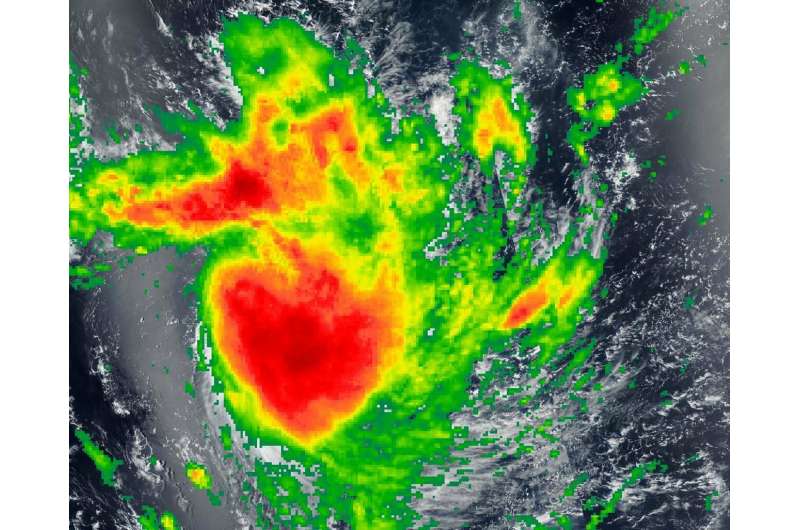NASA looks at Tropical Cyclone Funani's rainfall rates

Tropical Cyclone Funani continued tracking southeast through the Southern Indian Ocean on Feb. 7, 2019. When the GPM satellite passed overhead, it revealed that Funani's strongest rains wrapped around the center and extended northwest.
The Global Precipitation Measurement mission, or GPM, core satellite passed over Tropical Cyclone Funani on Feb. 8. GPM found the heaviest rainfall around the center and a fragmented band of thunderstorms northwest of center. In both areas rain was falling at a rate between 10 and 13 mm (0.4 and 0.5 inches) per hour. GPM is a joint mission between NASA and the Japan Aerospace Exploration Agency, JAXA.
At 10 a.m. EST (1500 UTC), the center of Funani was located near latitude 24.4 degrees south and longitude 71.2 degrees west. That's about 813 nautical miles east-southeast of Port Louis, Mauritius. Maximum sustained winds were near 105 knots (121 mph/195 kph).
Forecasters at the Joint Typhoon Warning Center expect Funani will continue to move southeast. The storm will gradually weaken before becoming extra-tropical after a day or so.
Provided by NASA's Goddard Space Flight Center




















